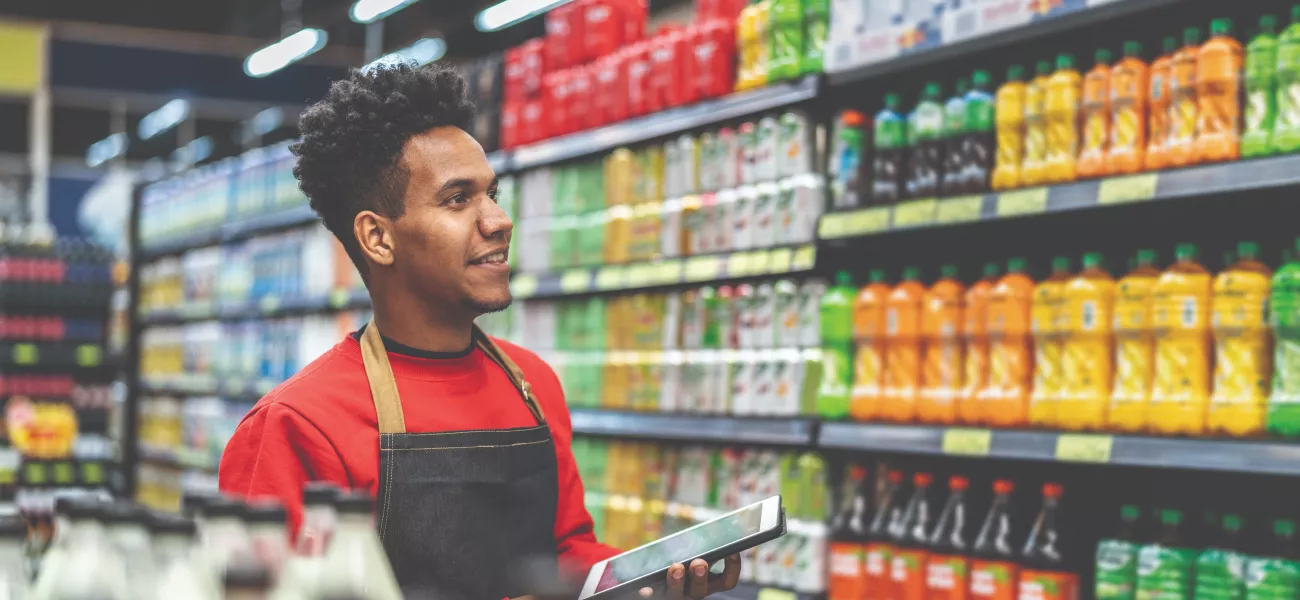
The old adage “knowledge is power” is as true today as it ever was. It’s clear that individuals and organizations make better decisions when armed with accurate and timely information. Today, advanced technology plays a major role—and it’s helping retailers, and their customers, make decisions through real-time data. The result? Greater business efficiency and improved customer experiences.
Next-Gen Computer Vision Offers Extraordinary Abilities and Insights
Insights from data analytics are transforming how businesses operate, identifying trends, and providing metrics to assess KPIs more accurately. However, until now, even with the best systems, a lag existed between the present reality and reported data. In food retail, where inventory turnover is high, that gap is particularly troublesome. When retailers lack real-time visibility of what’s happening in their stores, they can suffer from many problems, including empty shelves, products in the wrong location, and inaccurate inventories displayed on their customer mobile app. These issues diminish the customer experience, operational efficiencies, and profitability.
Real-time Retail
A subcategory of artificial intelligence (AI) known as computer vision uses computers to analyze and interpret the visual world in the same way that humans do—and it’s about to revolutionize the retail industry. Until recently it only worked in limited capacity, but advancements in AI have propelled it forward. Computer vision can now offer retailers highly accurate insights about what’s happening in their store, on the shelves, right now. It can watch every shelf, 24/7, accurately interpret what it is “seeing,” and provide live updates and notifications to store personnel, integrated business systems, and customer-facing technology like online shopping websites and in-store self-serve POS kiosks. It knows if shelves need restocking, displays require tidying up, product price tags are missing, and much more.
AI-Powered Solutions
Collectively, US supermarkets have over 14,000 miles of shelf space, displaying over a billion unique SKUs. In just one store, the logistics of capturing video of all the shelves and then instantaneously processing it via AI is mind-boggling. However, today, computer vision technology makes this possible. Google Cloud’s new shelf checking AI technology utilizes the company’s massive database and sophisticated algorithms along with high-performance network cameras to quickly recognize billions of products and ensure in-store shelves are stocked.
Network cameras process high-resolution video of the store shelves into tightly compressed data streams. The data streams are then transmitted to the cloud where all types of products are analyzed and identified based on visual and text features. These products can be identified from a variety of images taken at different angles and vantage points. In fact, retailers have a high degree of flexibility in the types of imagery that they can supply to the self-checking AI which, for example, could include images from ceiling-mounted cameras or a store associate’s mobile phone.
With computer vision, retailers can differentiate between 10 or 11 boxes of a specific cereal brand on the shelf, and even identify when the packages are not neatly aligned. It can tell if bar codes on the shelves match the products displayed above them. It can reconcile product stock in several locations in instances when shoppers have put things back where they don't belong. Computer vision is like a superpower, allowing retailers to see and understand what's happening throughout their stores at an unprecedented level of granularity.
Actionable Insights
To provide real value, the technology also shares its insights with people and systems capable of acting on the information. For example, notifications could be sent via text message to onsite and offsite personnel, reported via an online dashboard, pushed to business software like inventory management platforms, and used to trigger automated responses by other operations and security technology.
In addition to identifying anomalous situations, store management could program the solution to recognize particular conditions. It may want to know when a certain number of units remain of a given product, or if all remaining boxes are on the top shelf and difficult for customers to reach. The intelligence removes the guesswork about missing or out-of-place products, empowering retailers to optimize sales and gauge profitability more accurately.
A Healthy Bottom Line
With an ever-increasing abundance of data, advancing algorithms, and the growing capabilities of hybrid edge–cloud platforms, computer vision is poised to change the face of retail. And the timing couldn’t be better as retailers navigate a post-COVID world marked by supply chain issues, worker shortages and heightened customer expectations. Computer vision is the superpower that can help retailers defeat these challenges. Computer vision technology not only provides retailers with the insight necessary to optimize shelf space and control inventories, but as a result, it can help them manage staffing, increase customer satisfaction, and ultimately improve their bottom line.
